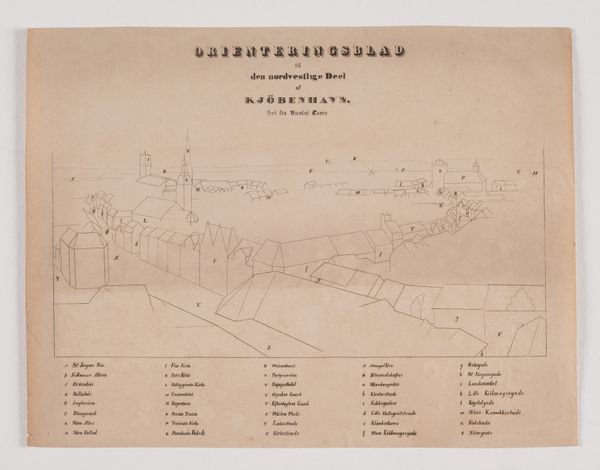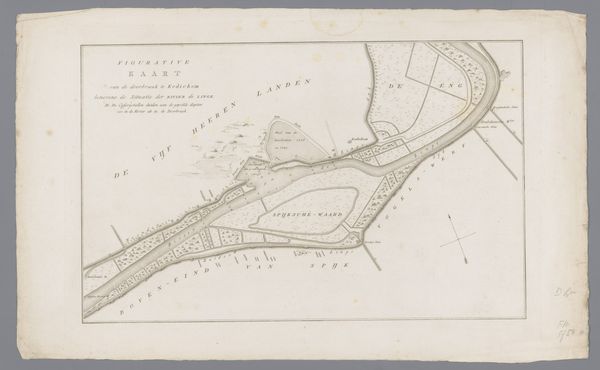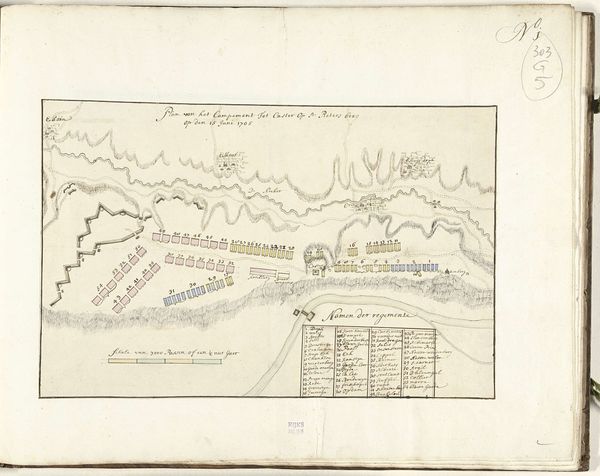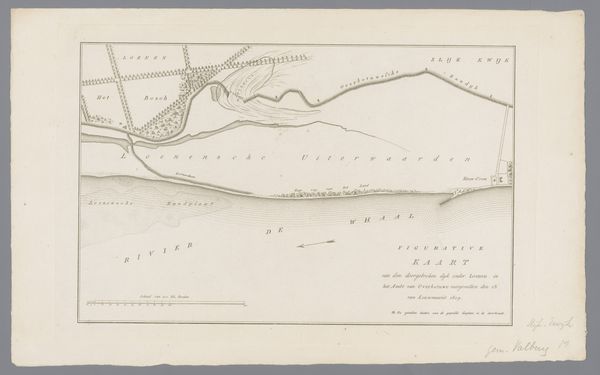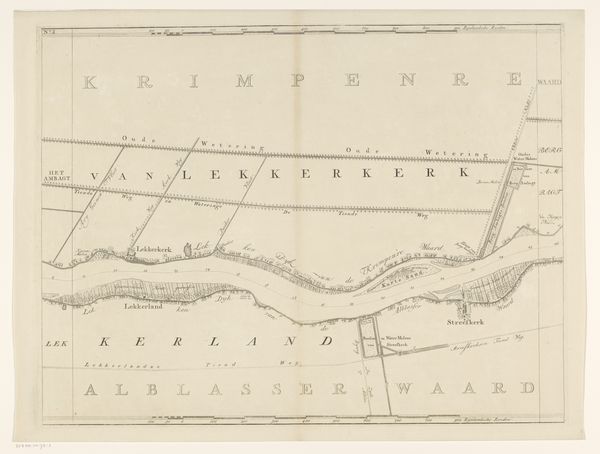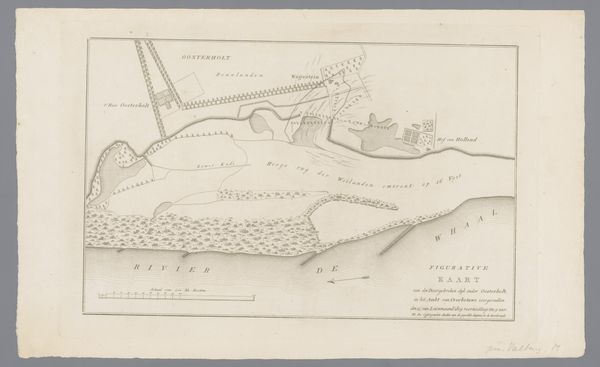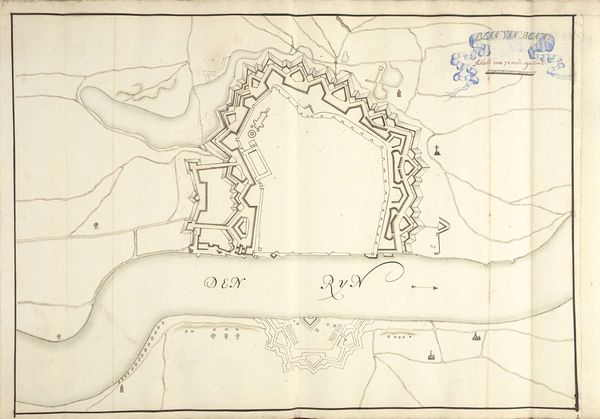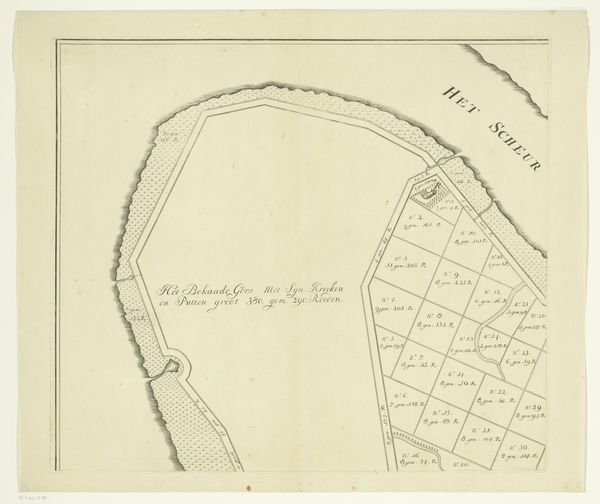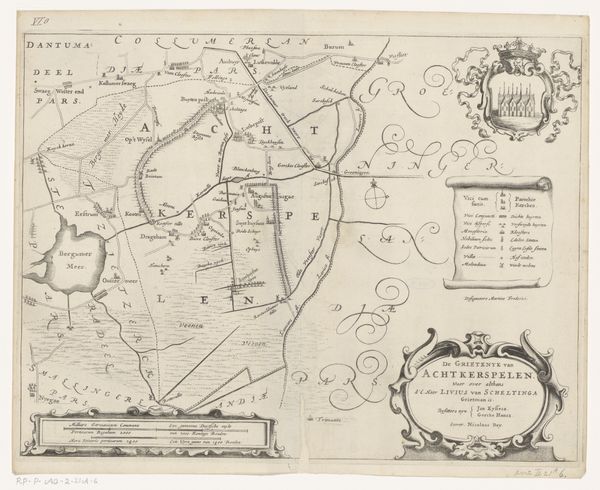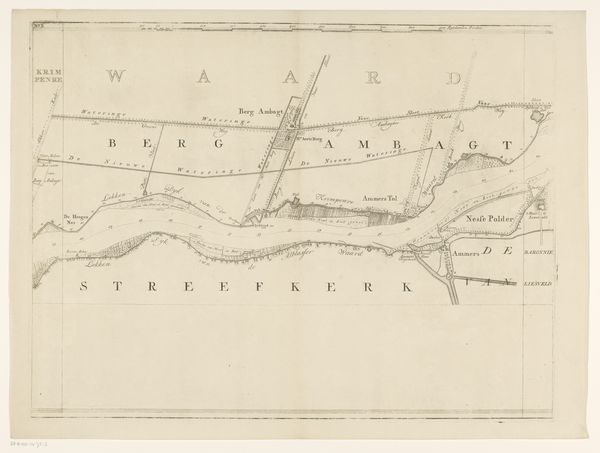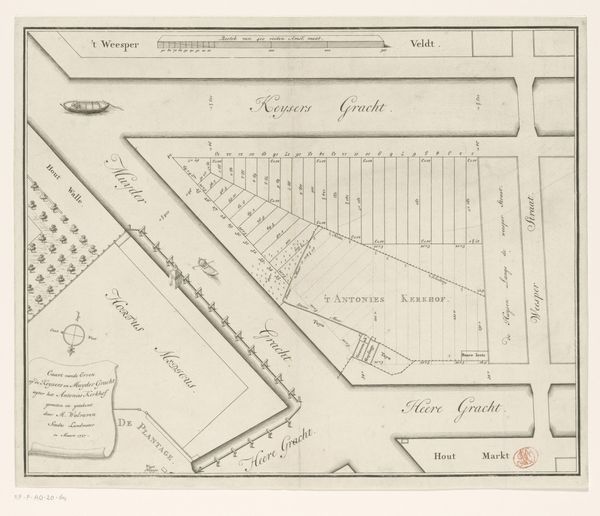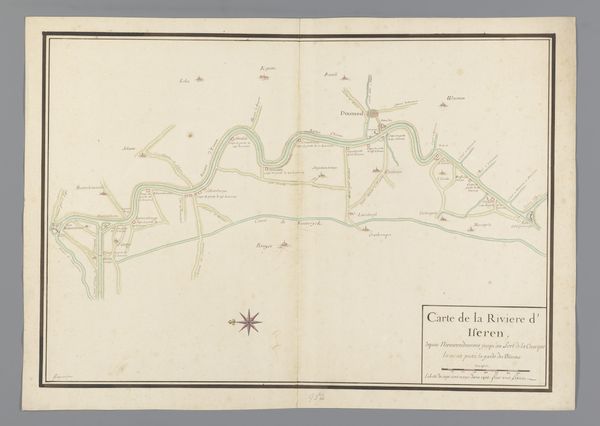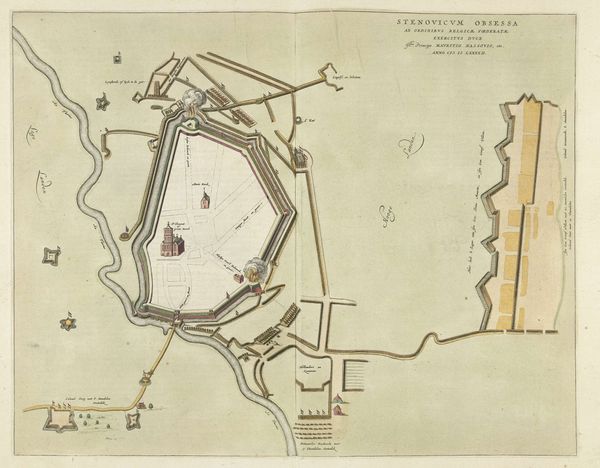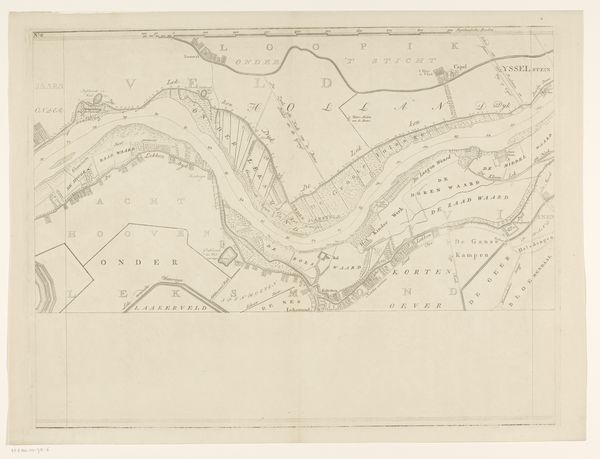
København set fra Nikolaj Tårn, orienteringsblad til den sydvestlige del 1837
0:00
0:00
drawing, print, paper, engraving
#
drawing
# print
#
landscape
#
paper
#
romanticism
#
cityscape
#
watercolour illustration
#
engraving
Dimensions: 227 mm (height) x 288 mm (width) (bladmaal)
Curator: This is "Copenhagen Seen from Nikolaj Tower, orientation sheet for the southwestern part," created in 1837 by Søren Henrik Petersen. It's an engraving and print on paper. Editor: It almost feels like a map or an architectural blueprint, but there's something quite delicate about it, almost like a faded memory. What is your take on this piece, particularly considering its historical context? Curator: Indeed. As a historian, I see this less as a purely objective cityscape and more as a carefully constructed vision of Copenhagen during a time of significant urban and social change. Notice the deliberate inclusion of prominent buildings – the palaces, churches, even the "Hotel Royal." Petersen isn’t simply documenting; he is presenting a particular narrative of civic pride and established power. What strikes you about the arrangement of these buildings in relation to each other? Editor: Well, everything seems very ordered and compartmentalized, almost stratified by importance with the key buildings at the forefront. Was this common in similar works from the period? Curator: Exactly. These panoramic views, common in the 19th century, played a crucial role in shaping and reinforcing a collective identity. They offered a seemingly comprehensive view of the city, which, in turn, helped to create a sense of shared space and history among its inhabitants. Think of it as early "city branding". What effect do you think it had on the public? Editor: So, this print isn’t just showing Copenhagen; it's also selling an idea of what Copenhagen should be. It’s quite interesting to see how art served this function. It gave people the feeling of belonging, perhaps pride as well? Curator: Precisely. The deliberate aesthetic choices reinforced the status quo and created a sense of collective identity rooted in a particular vision of the city. Editor: Fascinating. I'll certainly look at similar works with fresh eyes. Thank you.
Comments
No comments
Be the first to comment and join the conversation on the ultimate creative platform.
